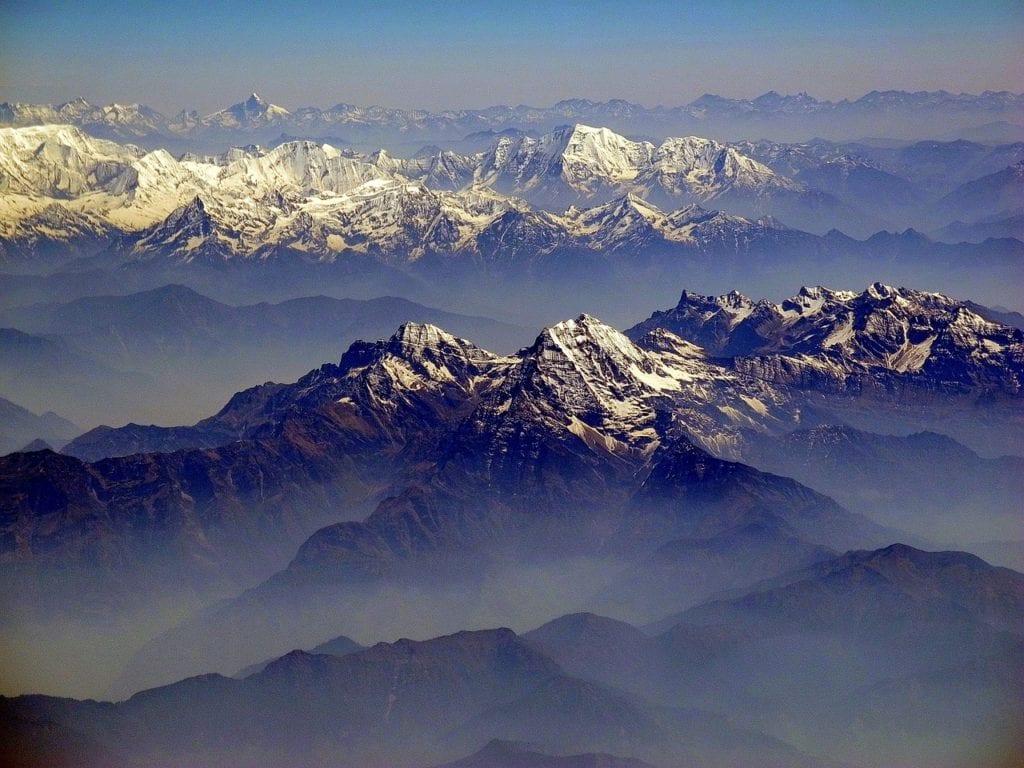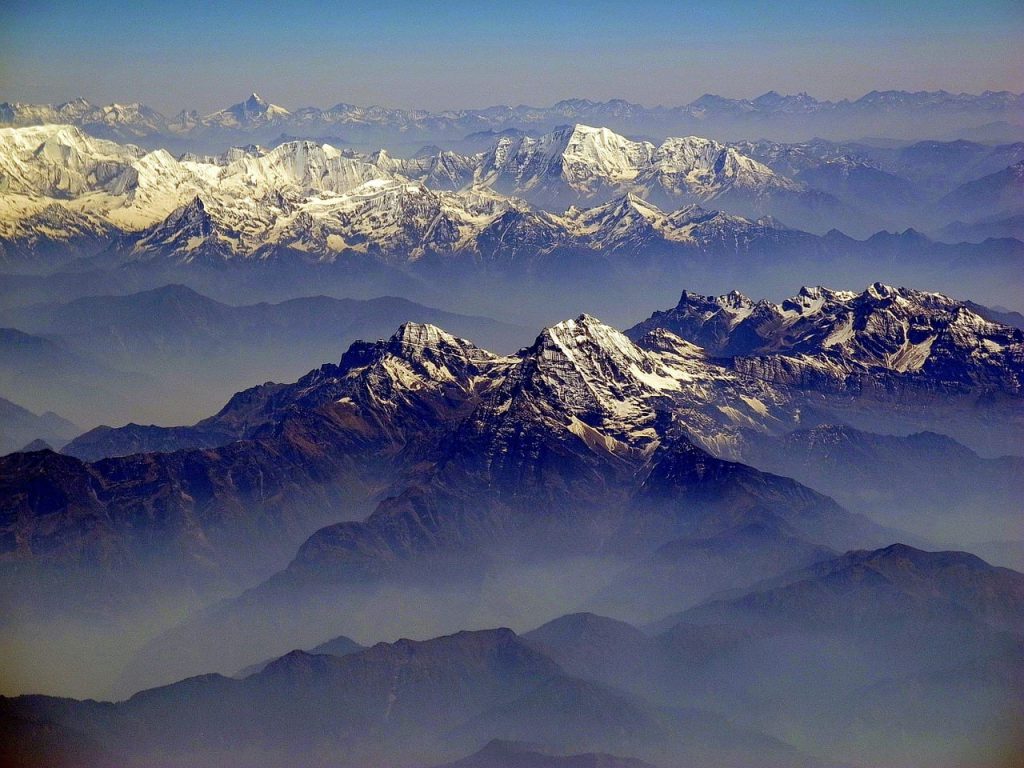
Revealing the Magic of the Magnificent Himalayas
The Himalayas are a rich tapestry of cultures and landscapes, spanning six diverse countries. The 1,500 mile stretch of majestic mountain ranges are home to some of the most inspiring sites in the world, starting in Afghanistan, before descending upon Pakistan, Indian, Nepal and China, before ending in secretive Bhutan.
Come with us on an enchanting journey through some of the most sensory destinations on planet earth and discover the hidden gems of the Himalayas.
Afghanistan to Pakistan: Khyber Pass
Our voyage starts at the Khyber Pass, the mountain pass cutting through the north-eastern section of the Spin Ghar mountains. The road connects neighbouring Afghanistan and Pakistan and is one of the oldest passes in the world; a part of the ancient Silk Road.
The narrow gorge winds around a desolate landscape predominantly made up of shale and limestone cliffs as far as the eye can see before opening onto the barren Lowyah Dakkah plain which stretches to the Kabul River.
The steep and often dangerous trail is the only way through the mountains. Travellers must obtain a permit to be granted access and travel with an armed guard at all times.
Marking the border between Afghanistan and Pakistan is the tribal town of Landi Kotal. The town appears derelict and dust-ridden, although full of life. The town is a notorious smuggling hot-spot and intrepid tourists will come face to face with weapons factories and hashish warehouses.
The decline from Landi Kotal is steep and arid. Nothing but dust and rock meet the eye as vehicles descend upon the Afghan territory of Towr Kham, before finally winding 10 miles down the valley to Lowyah Dakkah.
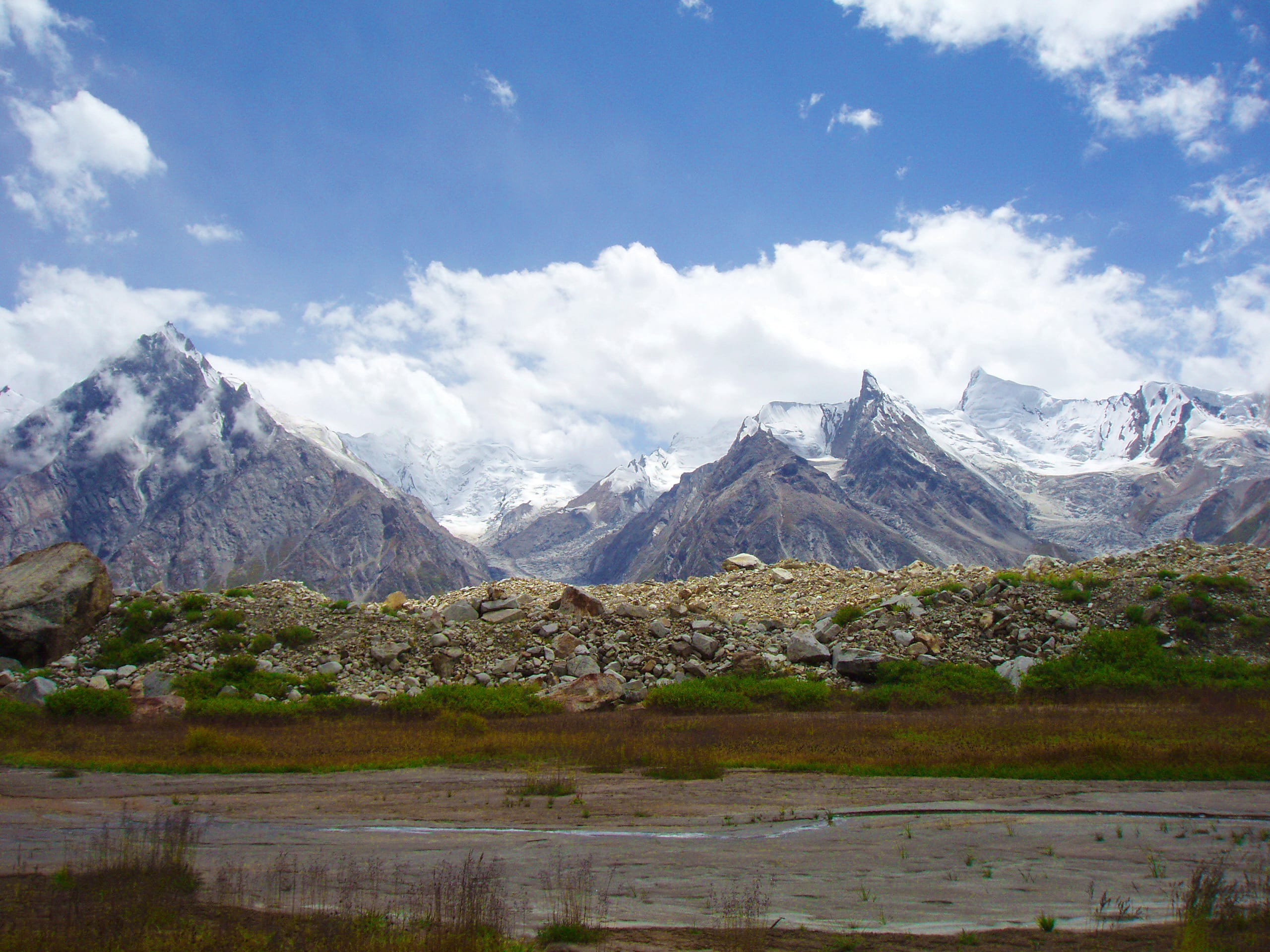 Pakistan: Gilgit
Pakistan: Gilgit
From Lowyah Dakkah it is a day’s journey to Gilgit, taking in the sights of Peshawar, Haripur, and Mansehra. The journey to the Himalayas has only just begun but, visiting Gilgit during the winter months will give you a taste of things to come.
During the summer the Gilgit region boasts stunning views; fertile green valleys give way to snow-peaked mountains. Here, three of the mightiest mountain ranges in the world meet: the Karakoram, the Handukuch, and the Himalayas. Many believe that Gilgit is paradise on earth and the most beautiful location in the whole of Pakistan.
 Pakistan: K2
Pakistan: K2
To the east of tranquil Gilgit, just shy of the Tibetan border, is the second highest mountain in the world. Named K2 but also referred to as Chogori and Mount Godwin-Austen, the mountain stands 28,251 feet above sea level and is part of the Karakorma Range, with the Himalayas to the south.
Since 1982, many have tried to reach the summit of the colossal mountain. Few have made it and many have perished during their attempts. Visitors are welcome to marvel from the foot of the mountain at what is known as ‘the throne room of the mountain Gods’ in nearby Concordia. Visitors often comment that the daunting landscape brings overwhelming feelings of insignificance and the power of Mother Nature.
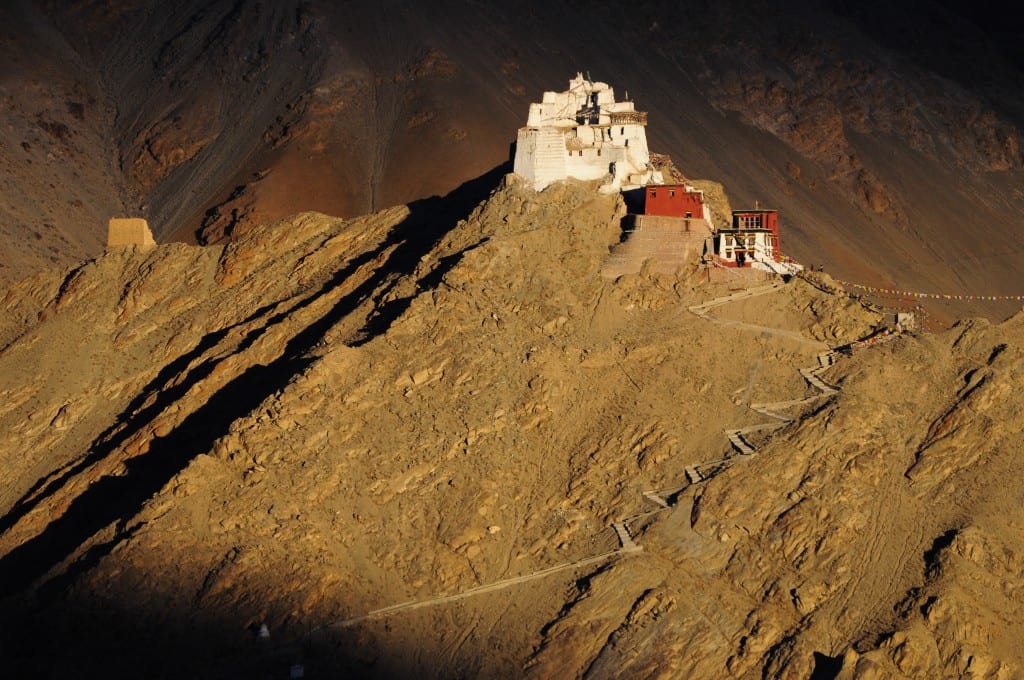 India: Leh
India: Leh
215 km south of the K2 is the high-desert Himalayan city of Leh, located in the Indian state of Jammu and Kashmir. Leh is the capital of Ladkah, a khaki-coloured valley enveloped between the Karakoram Mountains and the Himalayas.
Leh is small and can be easily navigated on foot, but it can take time to acclimatise to the high altitude – 3,5000 meters above sea level. The 35,000-strong population is mostly made up of Buddhist Ladakhi’s and Muslim Kashmiri’s and this is echoed in the blend of unique architecture. Travellers feel at home in Leh due to the warm and welcoming locals who regularly invite foreigners for meals of Kashmiri and Tibetan cuisine.
Visitors champion Leh for being one of the most beautiful and fascinating towns throughout the Himalayas. Leh Palace dominates the skyline, standing stark and other-worldly. It has remained uninhabited since 1846 and the powerful views from the uppermost rooftops offer the peaks of the Himalayas in panorama.
Further into the mountains beyond Leh Palace is Namgyal Tsemo Monastrey. The burnt red and white colours of the structure are a vibrant spectacle against the earthen tones of the landscape. The Buddhist monastery was founded in 1430 by King Tashi Mamgyal. Encased in the building is a three-story high gold statue of Maitreya Buddha and ancient manuscripts and frescoes.
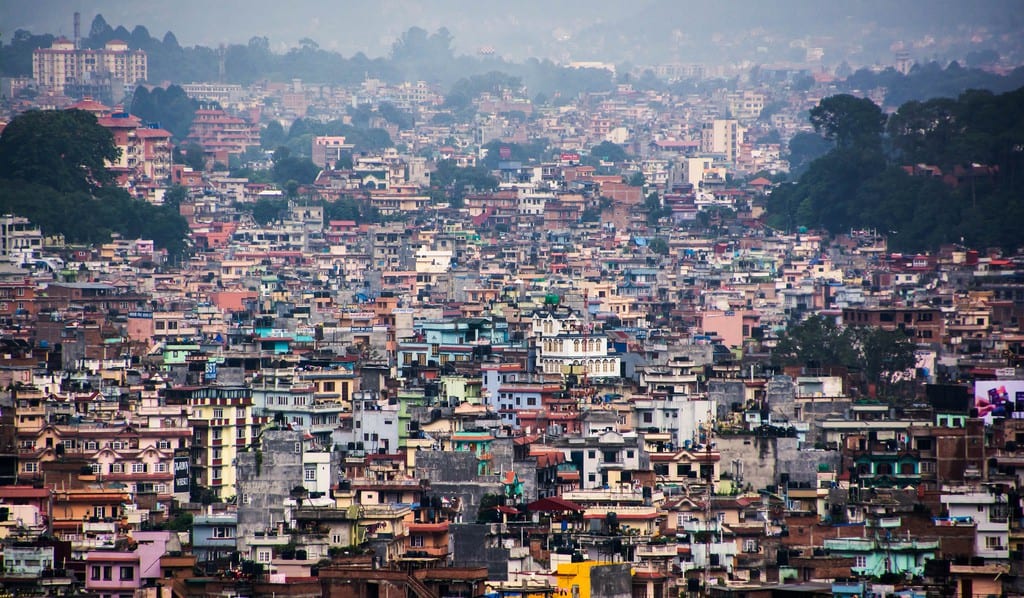 Nepal: Kathmandu
Nepal: Kathmandu
Voyagers now have a choice: a 15-hour flight or three-day road trip to Kathmandu in Nepal. The flight is by far the simplest option but, by road, you get to take in incredible Indian cities such as Ludhiana, New Delhi, and Lucknow. However, the choice is yours.
Kathmandu is an attack on the senses; an overwhelming cornucopia of sights, sounds, and smells. It is both intoxicating and exhausting and the vibrancy of the city contrasts against the tranquil Himalayas in the north.
The city is the polar-opposite of our previous location, Leh. But, Kathmandu is compelling in a chaotic way. Durbar Square is a UNESCO World Heritage Site and consists of temples, idols, courts and fountains from old kingdoms of Nepal. Many of the buildings are formed of Newa architecture; an indigenous style used by the Newari people. The style is distinguished by striking brick work and unique wood carvings seen nowhere else in the world.
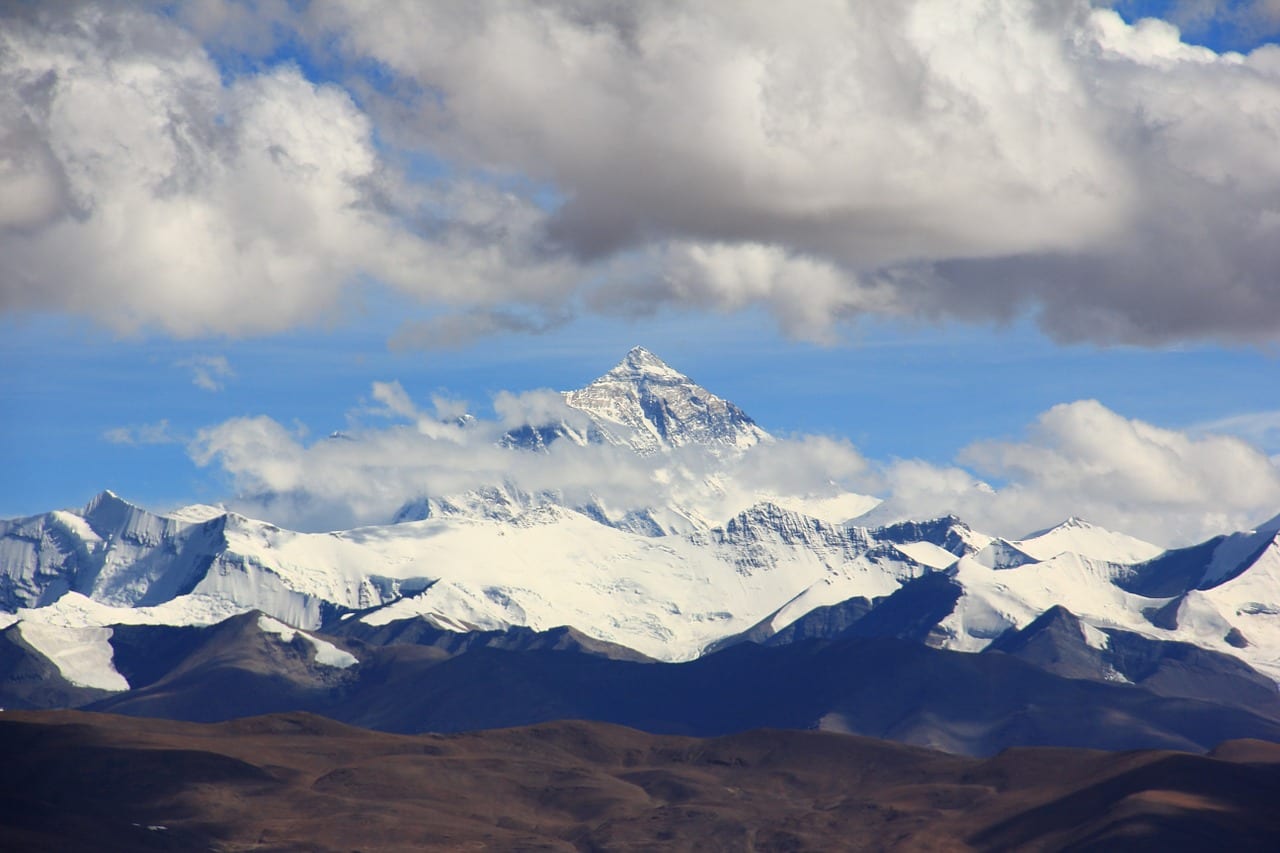 Nepal: Mount Everest
Nepal: Mount Everest
No Nepalese Himalayan pilgrimage would be complete without visiting Mount Everest, the highest mountain in the world. Peaking at a colossal 29,029 feet above seal it is located in the Mahalangur section of the Himalayas and the summit straddles the border of Nepal and China.
If travellers can stomach a nerve-wracking 30-minute flight in a minute plane, they will land at Lakla airport. From here, avid hikers can trek for two days to reach Manche Bazaar, the closest point to Mount Everest besides base camp. Those with the skills can endure the week-long hike to base camp, taking in the settlements of Tengboche, Pheriche, Duglha, Lobuche, and Gorak Shep. However, due to the altitude, it can be a an extremely taxing journey.
Further still, trekkers can scale the 5,545-meter ascent to Kala Patthar which offers unbelievable views of Everest, Lhotse, and Nuptse.
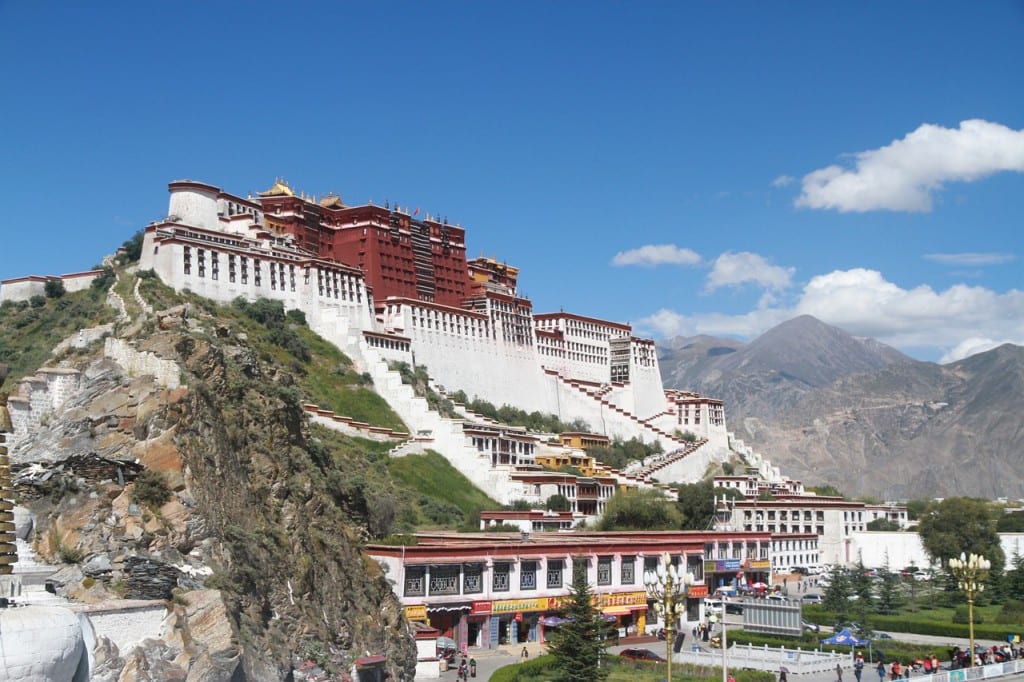 Tibet: Lhasa
Tibet: Lhasa
We now cross the border into the Tibetan region of China. Lhasa lies in a valley of the Himalayas and is known as a city of wonders. The first thing that meets any travellers eye is the immense Potala Palace which was built in the 7th century AS and was once the winter retreat for the Dalai Lama. The sheer scale of the structure sends a shiver down the spine of most visitors and the white-washed Tibetan quarter encapsulates the traditions upheld by the Tibetan people of this region.
Pilgrims and travellers alike both flock to Jokhang Temple. The flickering lamps and wafting incense add to the peaceful and holy feel of the monastery which houses statues of Buddah that Nepalese and Chinese princesses bought for King Songtsan Gampo, the founder of the Tibetan empire.
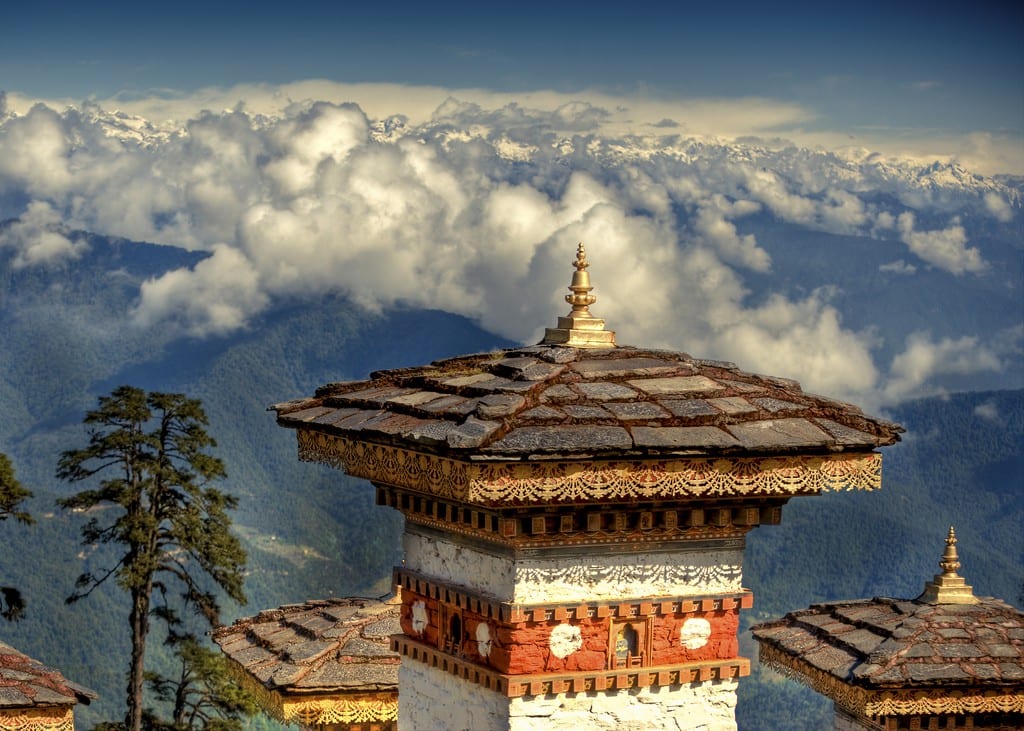 Bhutan: Thimphu
Bhutan: Thimphu
Our journey ends in the remote kingdom of Bhutan. Often dominated by the Asian monoliths of India and China, Bhutan and its capital, Thimphu, are often overlooked. The Bhutanese Himalayas are rarely visited by travellers but are a hiker’s paradise. The most famous route is The Snowman Trek which takes a staggering 25 days to complete. However, there are shorter walks and hikes to take in the beautiful mountain views.
Travellers from outside South Asia must pay £155 for the pleasure of entering Bhutan but this fee is minor when you are met with the awe-inspiring Tiger’s Nest Monastery, known colloquially as Paro Taktsang. It is a sacred Himalayan Buddhist site death-defyingly located on the cliff face 3,000 feet above the Paro Valley.
Taktsang is a poignant location to finish any Himalayan voyage. Visitors are welcome to relax and meditate with views of the Himalayas only disturbed by majestic white-bellied herons and black-necked cranes.
